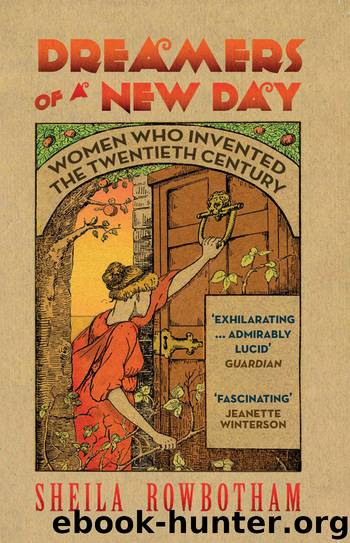Dreamers of a New Day by Sheila Rowbotham

Author:Sheila Rowbotham
Language: eng
Format: epub, mobi
ISBN: 9781844677030
Publisher: Verso Books
Published: 2013-04-16T16:00:00+00:00
The Working Women’s Society laid the basis for the New York City Consumers’ League, which was formed in 1891. Consumers were encouraged not only to boycott, but to shop ethically. In 1891 the New York League drew up a ‘White List’ of department stores which met fair standards on wages, hours, physical conditions, management–employee relations and child labour. Middle-class concern about the conditions in which goods were produced united altruism with self-interest. The growing awareness of hygiene and sanitation, and a fear of the spread of infectious diseases, contributed to support for the reform of the low-paid, labour-intensive ‘sweated trades’; Josephine Shaw Lowell, the first president of the New York Consumers’ League, was also active at a national level on the US Sanitary Commission. The Consumers’ Leagues, which began to spread in many cities and towns in the US during the 1890s, varied in their political emphases and in the alliances they made locally. While some League members were moved by ethical feelings of responsibility towards the weak, and others by concerns about public hygiene, those with a more radical perspective pushed for an alliance between consumers and producers. Florence Kelley argued that the Leagues should oppose sweated labour by adopting the idea of a ‘trade union label’ to prove that unionized labour had been used. She also advocated working alongside the unions. In 1899 Kelley became secretary of the National Consumers’ League, which under her leadership evolved into a significant lobby for the state regulation of consumption and production.25
Organization around ethical consumption provided a context in which cross-class alliances could operate. When in 1910 the New York Consumers’ League set up its own Label Shop on West 28th Street, selling only ethically-produced goods, the International Ladies’ Garment Workers’ journal – the Ladies’ Garment Worker – urged working men and women to support the venture. ‘Here you will find all kinds of waists and dresses bearing the union label, and the woman wearing a waist with a union label can feel well dressed in a new and larger sense than that term usually implies.’26 By 1913, however, the journal was noting that consumer power was hitting some unforeseen cultural obstacles; the wives of trade unionists were not automatically committed to trade union goods, while the middle class tended to associate the trade union label with less expensive goods.27
Some working-class communities did adopt consumer pressure as an ancillary to trade union action. Members of the Women’s Card and Label League in Seattle pledged themselves to buy from stores with the union label. In 1920, when the Seattle Central Labor Council decided to support the American Federation of Labor (AFL) by declaring a boycott of the Bon Marché department store for using non-union labour, the Women’s Card and Label League along with the local Women’s Trade Union League, the Consumers’ League and several other women’s groups, resolutely shopped elsewhere.28 Although the boycott was unsuccessful, the Seattle trade union and co-operative movement acquired a complex understanding of the political economy of consumption. Purchasing
Download
Dreamers of a New Day by Sheila Rowbotham.epub
Dreamers of a New Day by Sheila Rowbotham.mobi
This site does not store any files on its server. We only index and link to content provided by other sites. Please contact the content providers to delete copyright contents if any and email us, we'll remove relevant links or contents immediately.
| Anthropology | Archaeology |
| Philosophy | Politics & Government |
| Social Sciences | Sociology |
| Women's Studies |
On the Front Line with the Women Who Fight Back by Stacey Dooley(4702)
The Lonely City by Olivia Laing(4577)
The Rules Do Not Apply by Ariel Levy(4538)
Bluets by Maggie Nelson(4282)
The Confidence Code by Katty Kay(4049)
Three Women by Lisa Taddeo(3283)
Not a Diet Book by James Smith(3161)
Inferior by Angela Saini(3155)
A Woman Makes a Plan by Maye Musk(3147)
Confessions of a Video Vixen by Karrine Steffans(3107)
Pledged by Alexandra Robbins(3054)
Wild Words from Wild Women by Stephens Autumn(2943)
Nice Girls Don't Get the Corner Office by Lois P. Frankel(2940)
Brave by Rose McGowan(2740)
Women & Power by Mary Beard(2631)
The Girl in the Spider's Web: A Lisbeth Salander novel, continuing Stieg Larsson's Millennium Series by Lagercrantz David(2616)
Why I Am Not a Feminist by Jessa Crispin(2589)
The Clitoral Truth: The Secret World at Your Fingertips by Rebecca Chalker(2589)
Women on Top by Nancy Friday(2451)
